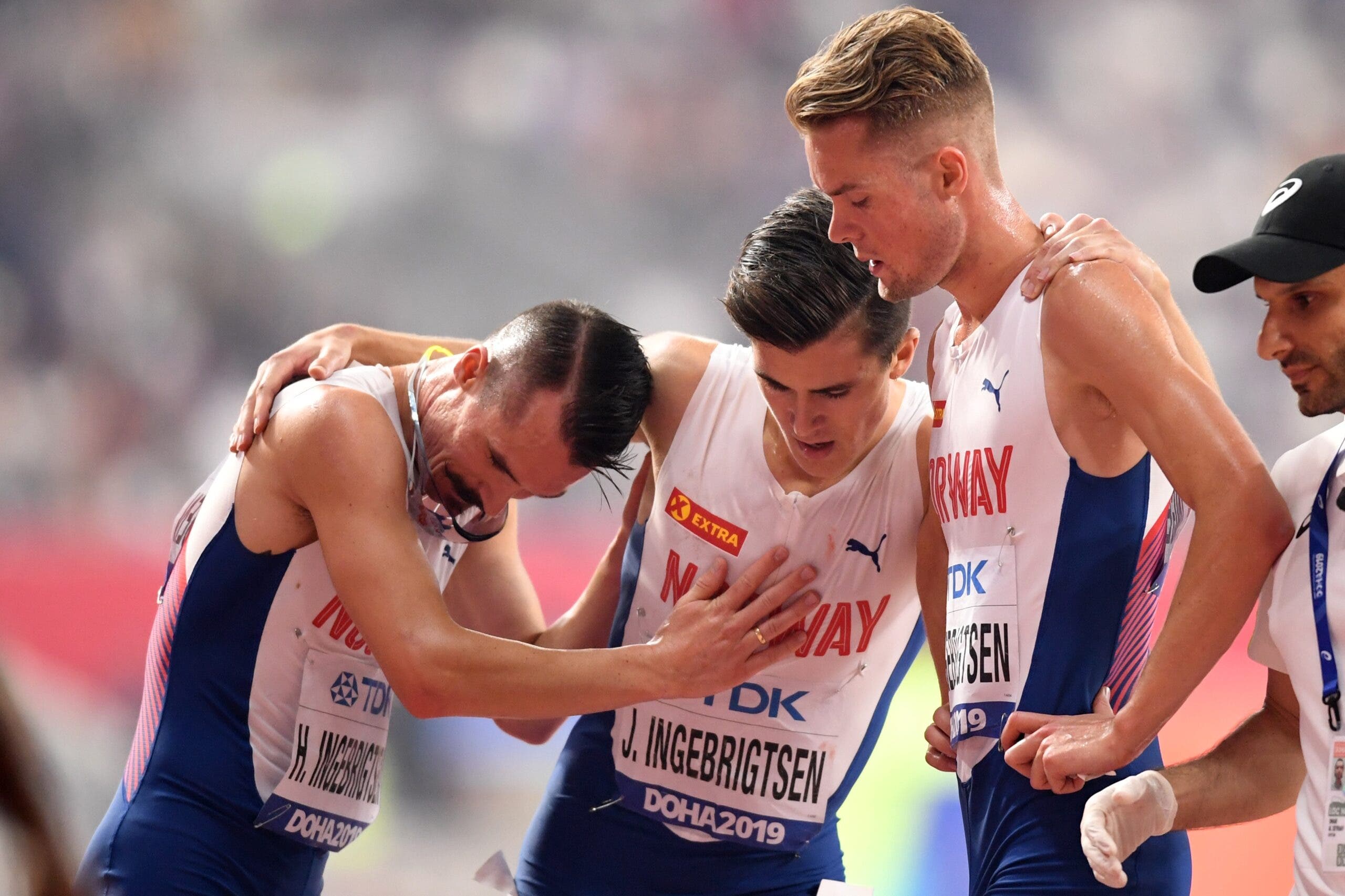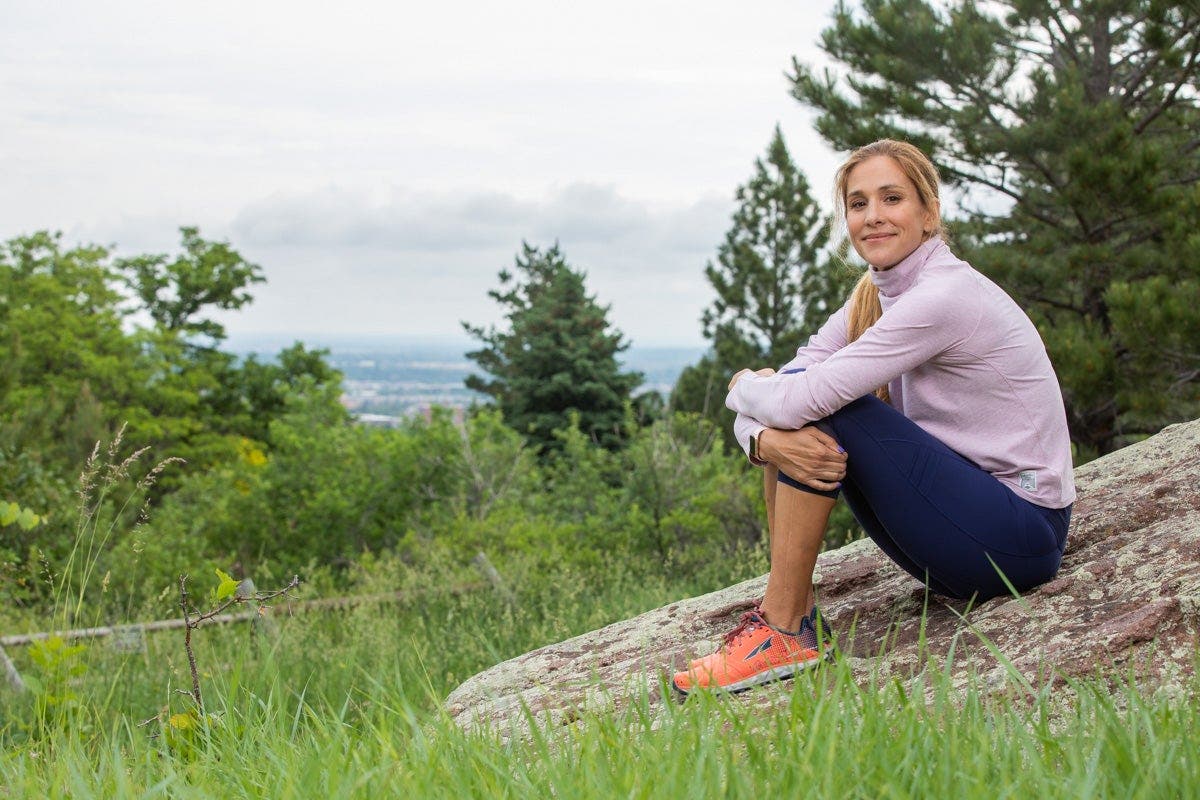Updated October 21, 2025 03:11PM
For the better part of a decade, the name Laura Muir has been synonymous with British—and global—track success. Rising through the ranks as a teenager, she quickly established herself among the nation’s all-time greats. By her 20s, she was competing on the world stage, capturing a silver medal in the 1500 meters at the Tokyo Olympics, a bronze medal at the 2022 World Athletics Championships, and setting several British records.
But behind the gleam of medals and national records lay a much darker reality—a coaching relationship marked by turmoil and, as recently revealed, abuse. Last month, UK Athletics (UKA) announced that a disciplinary panel had found Andy Young, who coached Muir until 2023 and was UKA Coach of the Year in 2016, guilty of serious misconduct and banned him from the sport for three years. The panel determined that Young, 48, had repeatedly placed performance above athlete welfare, citing incidents of coercive and manipulative behavior, dismissing injury concerns, and disregarding medical advice. In its findings, the panel described his actions as “pressure sufficient to vitiate the athletes’ free will.”
The revelations about Young’s behavior—and his subsequent ban, which is backdated to April 2023, making him eligible to return in April 2026 after completing extensive coaching training—have sent ripples far beyond the British track community. They’ve reignited a long-simmering conversation in the running arena: How do relationships built on trust and performance tip into control and harm? And what needs to change to ensure this cycle stops?
Not an Isolated Problem
Of course, the imbalance of power between coach and athlete is not unique to Muir and the other athletes who trained under Young, including top 800-meter runner Gemma Reekie and Canadian 1500-meter record holder Gabriela DeBues-Stafford. From high school programs to elite training groups, stories of emotional manipulation, boundary crossing, and “tough love” gone too far are all too familiar.
In 2019, Mary Cain—a teenage prodigy from New York who, at the time, was the youngest runner ever to make a world championship team—sent shockwaves through the sports world with a revealing New York Times video op-ed titled “I Was the Fastest Girl in America, Until I Joined Nike.” In it, she shared how she endured emotional and physical abuse under coach Alberto Salazar, who led Nike’s Oregon Project, an elite training group based in Portland, Oregon, from 2001 to 2019. Cain described serious injuries, losing her period for three years, and experiencing suicidal thoughts as a result of the disordered eating and extreme training methods she developed under Salazar’s guidance.
Salazar, who also served a ban for doping offenses, was later deemed “permanently ineligible” by SafeSport, the body that governs athlete welfare across Olympic and Paralympic sports, after being found guilty of four violations of emotional and sexual misconduct—allegations corroborated by several other athletes he coached, including Kara and Adam Goucher and Amy Yoder Begley. Cain, who has a memoir set for release in April, reportedly settled a $20 million lawsuit with Nike and Salazar in 2023. Goucher detailed her own experiences in her 2023 memoir, The Longest Race.
College Programs Under Scrutiny
Yet despite the very public fall of Salazar, similar stories continue to surface. In the past year alone, misconduct charges have been reported by female athletes against track coaches at several college programs, including the University of Pennsylvania, Houston Christian University, the University of Kentucky. In the past five years, cross-country and track coaches at Pepperdine University and Jacksonville University have been terminated or resigned after allegations of fostering a toxic environment that included bullying and emotional distress.
This isn’t an isolated issue. The big-picture problem, as experts note, is structural—how the power dynamic in running often gives coaches enormous influence over their athletes’ futures.
“Power imbalances develop because coaches control athletes’ training, race entries, and exposure to sponsors or international events,” says Maria Vasquez, a head of training for online personal training platform My Wow Fit and running coach who has worked with athletes across all levels. “A coach’s decision can determine who gets noticed, who travels, and whose career progresses—putting them firmly in charge of the athlete’s entire career path.”
Why Athletes Stay Silent
It’s not always easy to separate legitimate coaching intensity from emotional mistreatment. While sexual misconduct is typically unmistakable, emotional and psychological abuse can be far more insidious—often hidden beneath the guise of a “win at all costs” culture, or even mentorship and care.
Those dynamics make it difficult for athletes to speak up, even when something feels off, Vasquez says. “Athletes remain silent out of fear that speaking out will jeopardize their training, selection, or sponsorships. In elite sport, the coach’s opinion can make or break a career. There’s also a culture of loyalty—athletes don’t want to be seen as ‘difficult’ or risk team harmony.”
That fear can linger, even after a coach steps away. At the University of Wisconsin–Madison, several former runners recently came forward to share stories of what they described as a toxic team culture under former coach Mackenzie Wartenberger, who led the program from August 2019 until her sudden resignation in January 2022. Citing fear, five athletes waited nearly three years before publicly detailing instances of emotional abuse, body shaming, and the dismissal of injury concerns.

“I knew she was gone, but I was still terrified that somehow it was going to come back and people were going to think of me differently,” runner Alexa Westley told the Wisconsin State Journal. “I don’t really have a lot of regrets in life, but one of them would be not speaking up earlier or saying what really happened. At the same time, I was scared.”
For a young athlete in the thick of their career, it can feel easier to brush off a coach’s behavior as eccentric, intense, or simply “passionate” rather than to recognize it as potentially abusive. As Westley’s story shows, it often takes time and distance from the coach and team environment to fully process misconduct and find the courage to speak out.
Preventing Abuse Should Not Be the Responsibility of the Athlete
That’s why the responsibility for preventing abuse shouldn’t rest solely on athletes’ shoulders, Vasquez says. “Teammates, staff, and federations all play a role. They should watch out for each other and make sure there’s a welfare program that actually works,” she says. “There needs to be a liaison who acts as a bridge between athletes and coaches—someone who can share concerns confidentially before things escalate.”
Granted, the NCAA has systems in place to help prevent coach–athlete abuse—like required SafeSport training, annual reporting on sexual violence prevention, and school-level Title IX offices that handle misconduct complaints. Most programs, whether at the professional level or the youth level, also run background checks and set clear codes of conduct for staff. But these safeguards don’t always go far enough, and oversight varies from school to school.
At the University of Wisconsin, the mother of runner Brogan MacDougall reported concerns about Wartenberger’s behavior to both athletics officials and the university’s academic leadership in the fall of 2021—allegations that were reportedly never acted upon. Just a few months later, Wartenberger resigned. (Incidentally, she was the first of two Wisconsin coaches in a span of four seasons to step down publicly on their own terms despite accusations of verbal abuse and other issues that had been reported to athletic department administrators.)

Speaking Out: The First Step to Change
And while allowing a coach to quietly step down—as in Wartenberger’s case—or to return to the sport after a brief ban like Young can feel like a slap in the face to the athletes involved, speaking up is essential for change. Which is why stories like Muir and Reekie’s, Cain’s, Goucher’s, and those from the University of Wisconsin are so important, says Vasquez.
“More athletes speaking publicly about misconduct is making people rethink what’s acceptable in elite sport,” Vasquez says. “Coaches and staff know their actions are being watched, and athletes are more aware of their rights. It’s creating an environment where athletes can perform without fear.”
Muir, who chose to waive her anonymity to confirm her involvement in the case against her former coach, underscored the importance of being vocal in these matters, as well as the bravery it takes to do just that. “I want to thank those who came forward and those who contributed to the process,” she said in a statement. “It has not been easy, but it was necessary.”
Misconduct Red Flags
It’s not always easy to tell when intensity turns into abuse. The U.S. Center for SafeSport defines five red flags to watch for when it comes to emotional misconduct. (They also have toolkits for physical misconduct, bullying, harassment, and hazing.)
Verbal attacks like body shaming or ridicule
Physical aggression such as throwing equipment or punching walls
Isolation—ignoring or excluding athletes for no reason
Stalking or over-monitoring that causes fear or distress
Criminal conduct including any form of emotional or physical abuse under the law
Other warning signs include discouraging medical care, humiliation in front of teammates, controlling social contact, or showing favoritism.
If something feels off, an athlete should document it, tell someone they trust, and report it to the school’s athletic director, the Title IX office at a university, or uscenterforsafesport.org. And remember: Even past incidents can be reported, and speaking up helps protect future athletes.













